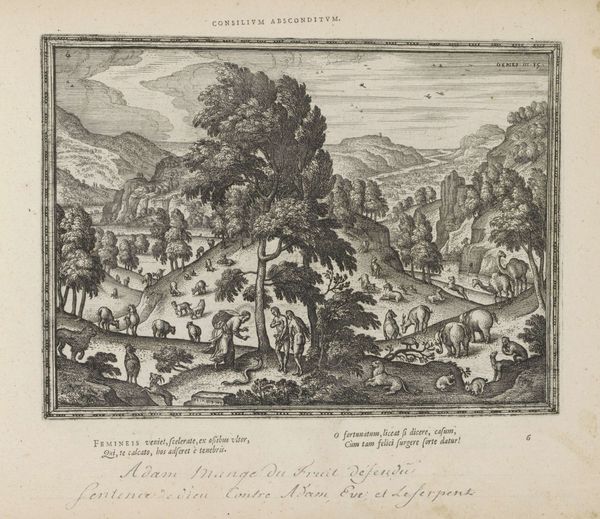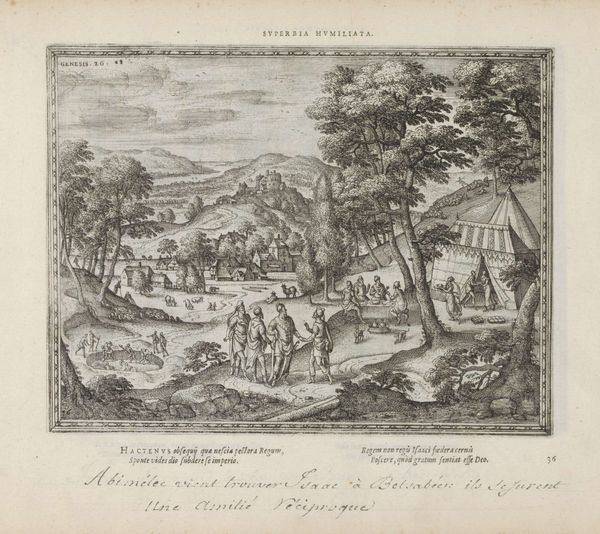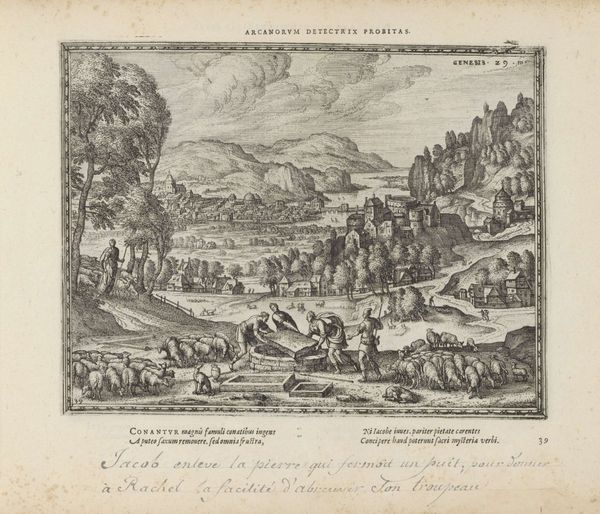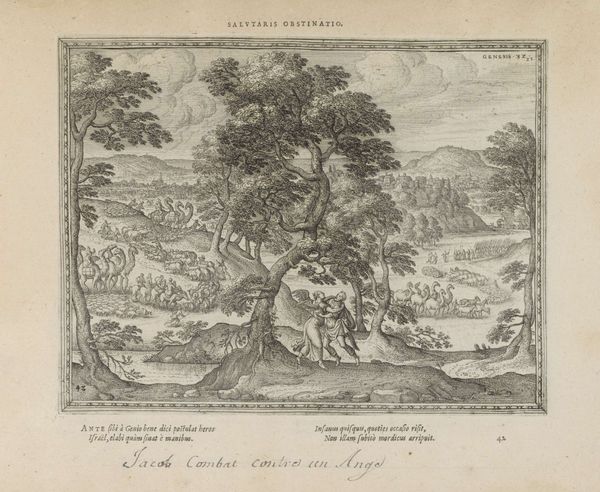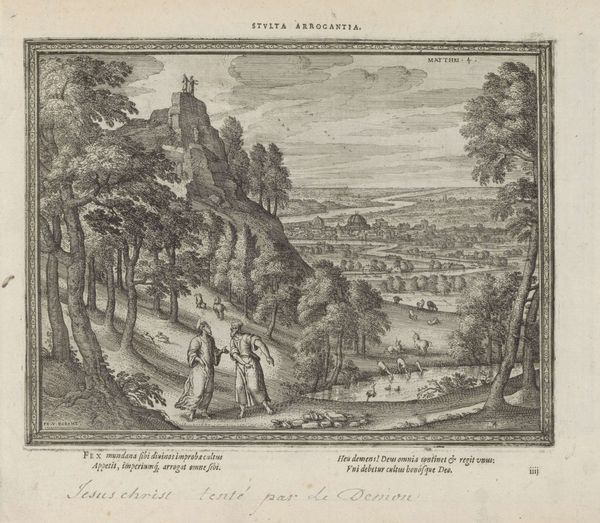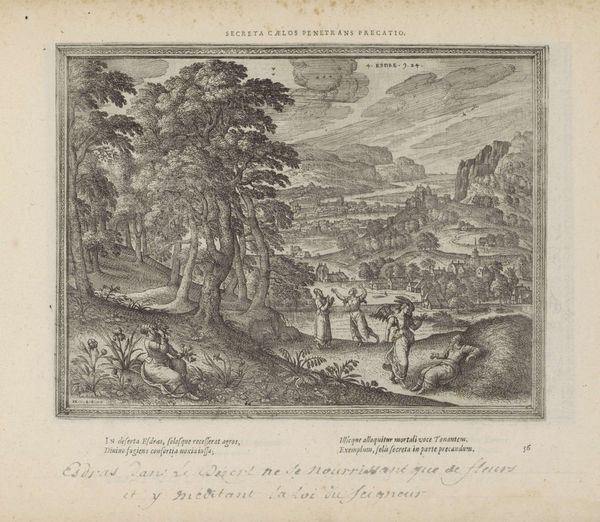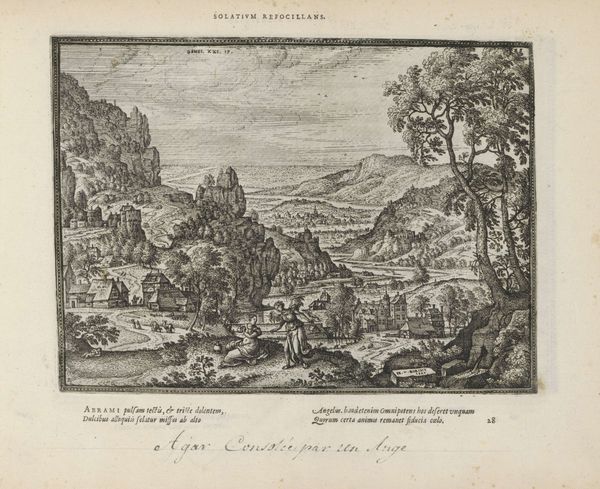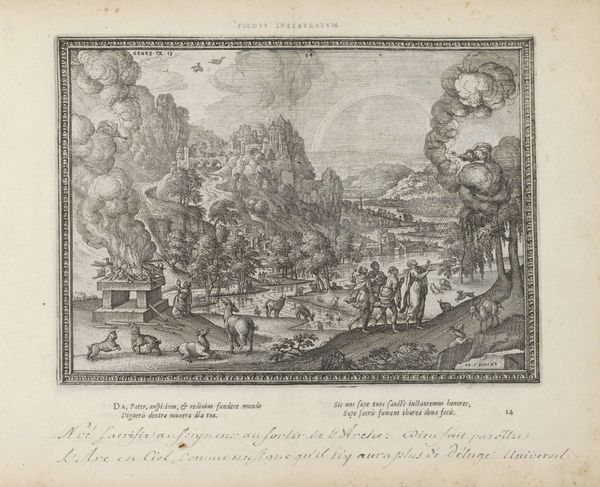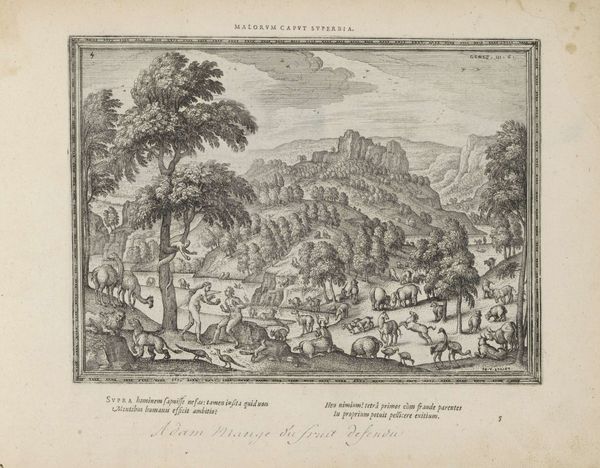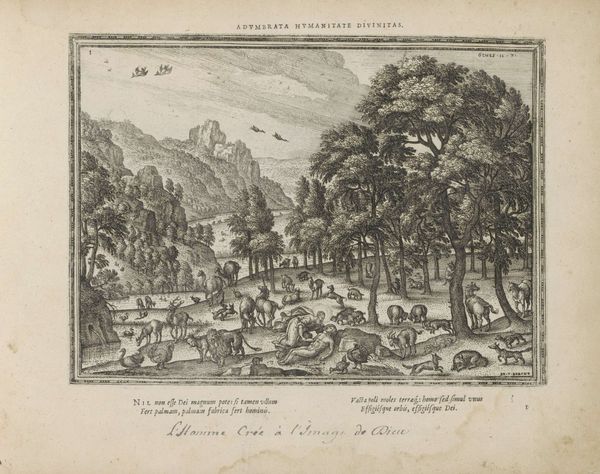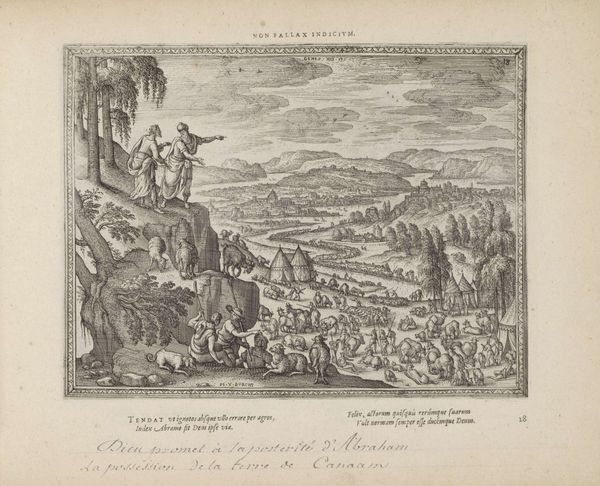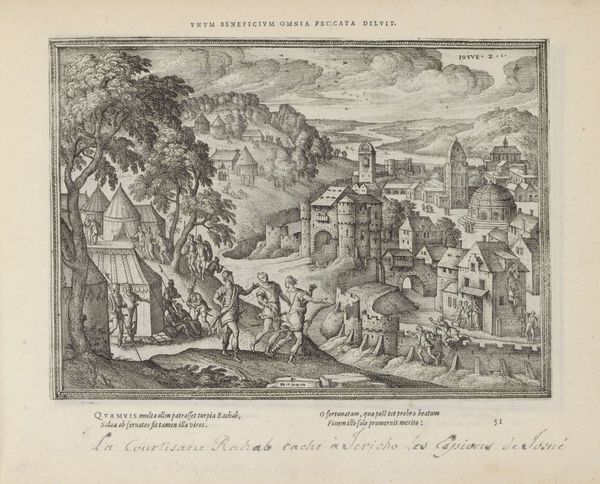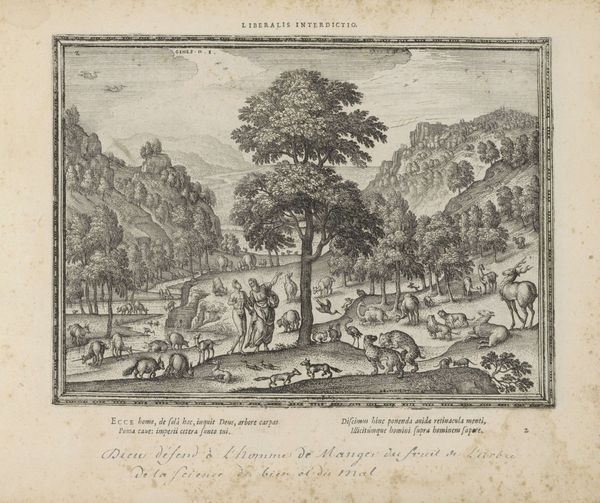
print, engraving
#
baroque
# print
#
landscape
#
genre-painting
#
engraving
Dimensions: height 184 mm, width 254 mm
Copyright: Rijks Museum: Open Domain
Curator: Pieter van der Borcht's "Dronkenschap van Noach," or "The Drunkenness of Noah," an engraving created between 1582 and 1613, is now held in the Rijksmuseum. Editor: What strikes me first is the contrast. The intimate scene in the tent—Noah exposed, his sons reacting—against that expansive, almost fantastical landscape. It feels deliberately unsettling. Curator: Absolutely. The tent acts almost as a stage. Consider the visual language: the tented structure signifies both shelter and vulnerability, containing this very human drama. The detailed figures within it draw us immediately to the symbolic heart of the story. Editor: The figures and setting are pulled straight from Genesis 9, but there’s a tension I read through a modern lens. Ham's "seeing" of Noah's nakedness becomes, in later interpretations, justification for racist hierarchies and the curse upon Canaan. How do we reckon with that embedded ideology here? Curator: We have to understand the layered context in order to approach the iconography effectively. There are established traditions behind representing Noah this way. His nakedness isn't just literal; it’s about uncovering truths, vulnerabilities. Borcht may have adopted popular interpretations of the day in his landscape backdrop and genre representation of these early events. Editor: Still, it's hard to ignore how these visual traditions were later co-opted. The landscape is beautiful, but it feels like it’s complicit in framing this potentially fraught power dynamic between Noah’s sons and the world beyond the tent. It is definitely beautiful. But with that perspective and composition the implications of how this biblical scene has been and can still be exploited lingers in my thoughts. Curator: And that complex reaction is a testament to art’s lasting impact and relevance. The artist is definitely presenting that power balance from his lens. That vision has implications. This small print reveals the continuity of interpretation, the ongoing negotiation between text, image, and lived experience. Editor: Exactly. I initially saw that juxtaposition of the personal and public. And now, in contemplating the historical interpretations of the symbolism, I better realize how private shame gets writ large, onto entire populations, throughout history.
Comments
No comments
Be the first to comment and join the conversation on the ultimate creative platform.
